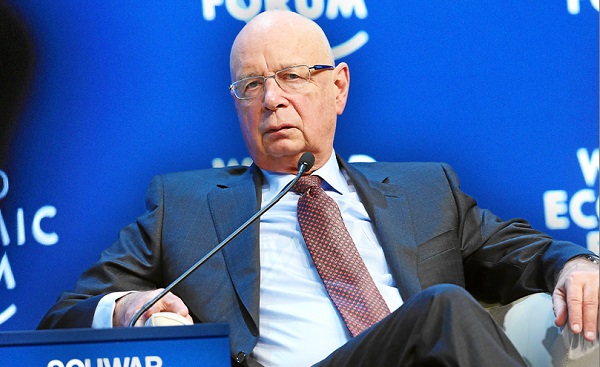Business
Ottawa’s avalanche of spending hasn’t helped First Nations

From the Fraser Institute
By Tom Flanagan
When Justin Trudeau came to power in 2015, he memorably said that the welfare of Indigenous Canadians was his highest priority. He certainly has delivered on his promise, at least in terms of shovelling out money.
During his 10 years in office, budgeted Indigenous spending has approximately tripled, from about $11 billion to almost $33 billion. Prime Minister Trudeau’s instruction to the Department of Justice to negotiate rather than litigate class actions has resulted in paying tens of billions of dollars to Indigenous claimants over alleged wrongs in education and other social services. And his government has settled specific claims—alleged violations of treaty terms or of the Indian Act—at four times the previous rate, resulting in the award of at least an additional $10 billion to First Nations government.
But has this avalanche of money really helped First Nations people living on reserves, who are the poorest segment of Canadian society?
One indicator suggests the answer is yes. The gap between reserves and other communities—as measured by the Community Well-Being Index (CWB), a composite of income, employment, housing and education—fell from 19 to 16 points from 2016 to 2021. But closer analysis shows that the reduction in the gap, although real, cannot be due to the additional spending described above.
The gain in First Nations CWB is due mainly to an increase in the income component of the CWB. But almost all of the federal spending on First Nations, class-action settlements and specific claims do not provide taxable income to First Nations people. Rather, the increase in income documented by the CWB comes from the greatly increased payments legislated by the Liberals in the form of the Canada Child Benefit (CCB). First Nations people have a higher birth rate than other Canadians, so they have more children and receive more (on average) from the Canada Child Benefit. Also, they have lower income on average than other Canadians, so the value of the CCB is higher than comparable non-Indigenous families. The result? A gain in income relative to other Canadians, and thus a narrowing of the CWB gap between First Nations and other communities.
There’s an important lesson here. Tens of billions in additional budgetary spending and legal settlements did not move the needle. What did lead to a measurable improvement was legislation creating financial benefits for all eligible Canadian families with children regardless of race. Racially inspired policies are terrible for many reasons, especially because they rarely achieve their goals in practise. If we want to improve life for First Nations people, we should increase opportunities for Canadians of all racial backgrounds and not enact racially targeted policies.
Moreover, racial policies are also fraught with unintended consequences. In this case, the flood of federal money has made First Nations more dependent rather than less dependent on government. In fact, from 2018 to 2022, “Own Source Revenue” (business earnings plus property taxes and fees) among First Nations bands increased—but not as much as transfers from government. The result? Greater dependency on government transfers.
This finding is not just a statistical oddity. Previous research has shown that First Nations who are relatively less dependent on government transfers tend to achieve higher living standards (again, as measured by the CWB index). Thus, the increase in dependency presided over by the Trudeau government does not augur well for the future.
One qualification: this finding is not as robust as I would like because the number of band governments filing reports on their finances has drastically declined. Of 630 First Nation governments, only 260 filed audited statements for fiscal 2022. All First Nations are theoretically obliged by the First Nations Financial Transparency Act, 2013, to publish such statements, but the Trudeau government announced there would be no penalties for non-compliance, leading to a precipitous decline in reporting.
This is a shame, because First Nations, as they often insist, are governments, not private organizations. And like other governments, they should make their affairs visible to the public. Also, most of their income comes from Canadian taxpayers. Both band members and other Canadians have a right to know how much money they receive, how it’s being spent and whether it’s achieving its intended goals.
Author:
Business
‘Great Reset’ champion Klaus Schwab resigns from WEF

From LifeSiteNews
Schwab’s World Economic Forum became a globalist hub for population control, radical climate agenda, and transhuman ideology under his decades-long leadership.
Klaus Schwab, founder of the World Economic Forum and the face of the NGO’s elitist annual get-together in Davos, Switzerland, has resigned as chair of WEF.
Over the decades, but especially over the past several years, the WEF’s Davos annual symposium has become a lightning rod for conservative criticism due to the agendas being pushed there by the elites. As the Associated Press noted:
Widely regarded as a cheerleader for globalization, the WEF’s Davos gathering has in recent years drawn criticism from opponents on both left and right as an elitist talking shop detached from lives of ordinary people.
While WEF itself had no formal power, the annual Davos meeting brought together many of the world’s wealthiest and most influential figures, contributing to Schwab’s personal worth and influence.
Schwab’s resignation on April 20 was announced by the Geneva-based WEF on April 21, but did not indicate why the 88-year-old was resigning. “Following my recent announcement, and as I enter my 88th year, I have decided to step down from the position of Chair and as a member of the Board of Trustees, with immediate effect,” Schwab said in a brief statement. He gave no indication of what he plans to do next.
Schwab founded the World Economic Forum – originally the European Management Forum – in 1971, and its initial mission was to assist European business leaders in competing with American business and to learn from U.S. models and innovation. However, the mission soon expanded to the development of a global economic agenda.
Schwab detailed his own agenda in several books, including The Fourth Industrial Revolution (2016), in which he described the rise of a new industrial era in which technologies such artificial intelligence, gene editing, and advanced robotics would blur the lines between the digital, physical, and biological worlds. Schwab wrote:
We stand on the brink of a technological revolution that will fundamentally alter the way we live, work, and relate to one another. In its scale, scope, and complexity, the transformation will be unlike anything humankind has experienced before. We do not yet know just how it will unfold, but one thing is clear: the response to it must be integrated and comprehensive, involving all stakeholders of the global polity, from the public and private sectors to academia and civil society …
The Fourth Industrial Revolution, finally, will change not only what we do but also who we are. It will affect our identity and all the issues associated with it: our sense of privacy, our notions of ownership, our consumption patterns, the time we devote to work and leisure, and how we develop our careers, cultivate our skills, meet people, and nurture relationships. It is already changing our health and leading to a “quantified” self, and sooner than we think it may lead to human augmentation.
How? Microchips implanted into humans, for one. Schwab was a tech optimist who appeared to heartily welcome transhumanism; in a 2016 interview with France 24 discussing his book, he stated:
And then you have the microchip, which will be implanted, probably within the next ten years, first to open your car, your home, or to do your passport, your payments, and then it will be in your body to monitor your health.
In 2020, mere months into the pandemic, Schwab published COVID-19: The Great Reset, in which he detailed his view of the opportunity presented by the growing global crisis. According to Schwab, the crisis was an opportunity for a global reset that included “stakeholder capitalism,” in which corporations could integrate social and environmental goals into their operations, especially working toward “net-zero emissions” and a massive transition to green energy, and “harnessing” the Fourth Industrial Revolution, including artificial intelligence and automation.
Much of Schwab’s personal wealth came from running the World Economic Forum; as chairman, he earned an annual salary of 1 million Swiss francs (approximately $1 million USD), and the WEF was supported financially through membership fees from over 1,000 companies worldwide as well as significant contributions from organizations such as the Bill & Melinda Gates Foundation. Vice Chairman Peter Brabeck-Letmathe is now serving as interim chairman until his replacement has been selected.
2025 Federal Election
POLL: Canadians want spending cuts

 By Gage Haubrich
By Gage Haubrich
The Canadian Taxpayers Federation released Leger polling showing Canadians want the federal government to cut spending and shrink the size and cost of the bureaucracy.
“The poll shows most Canadians want the federal government to cut spending,” said Gage Haubrich, CTF Prairie Director. “Canadians know they pay too much tax because the government wastes too much money.”
Between 2019 and 2024, federal government spending increased 26 per cent even after accounting for inflation. Leger asked Canadians what they think should happen to federal government spending in the next five years. Results of the poll show:
- 43 per cent say reduce spending
- 20 per cent say increase spending
- 16 per cent say maintain spending
- 20 per cent don’t know
The federal government added 108,000 bureaucrats and increased the cost of the bureaucracy 73 per cent since 2016. Leger asked Canadians what they think should happen to the size and cost of the federal bureaucracy. Results of the poll show:
- 53 per cent say reduce
- 24 per cent say maintain
- 4 per cent say increase
- 19 per cent don’t know
Liberal Leader Mark Carney promised to “balance the operating budget in three years.” Leger asked Canadians if they believed Carney’s promise to balance the budget. Results of the poll show:
- 58 per cent are skeptical
- 32 per cent are confident
- 10 per cent don’t know
“Any politician that wants to fix the budget and cut taxes will need to shrink the size and cost of Ottawa’s bloated bureaucracy,” Haubrich said. “The polls show Canadians want to put the federal government on a diet and they won’t trust promises about balancing the budget unless politicians present credible plans.”
-

 International1 day ago
International1 day agoPope Francis has died aged 88
-

 International1 day ago
International1 day agoPope Francis Dies on Day after Easter
-

 International24 hours ago
International24 hours agoJD Vance was one of the last people to meet Pope Francis
-

 Business1 day ago
Business1 day agoCanada Urgently Needs A Watchdog For Government Waste
-

 Energy1 day ago
Energy1 day agoIndigenous-led Projects Hold Key To Canada’s Energy Future
-

 2025 Federal Election1 day ago
2025 Federal Election1 day agoCarney’s budget means more debt than Trudeau’s
-

 2025 Federal Election13 hours ago
2025 Federal Election13 hours agoOttawa Confirms China interfering with 2025 federal election: Beijing Seeks to Block Joe Tay’s Election
-

 2025 Federal Election13 hours ago
2025 Federal Election13 hours agoReal Homes vs. Modular Shoeboxes: The Housing Battle Between Poilievre and Carney








